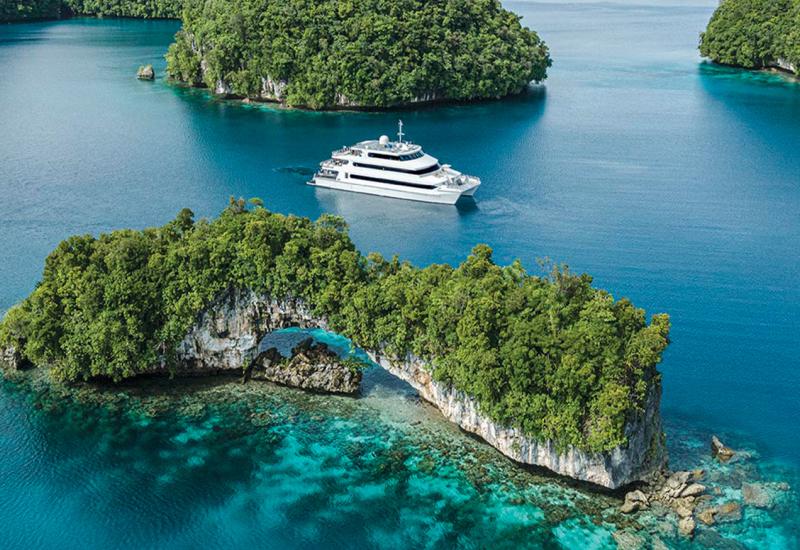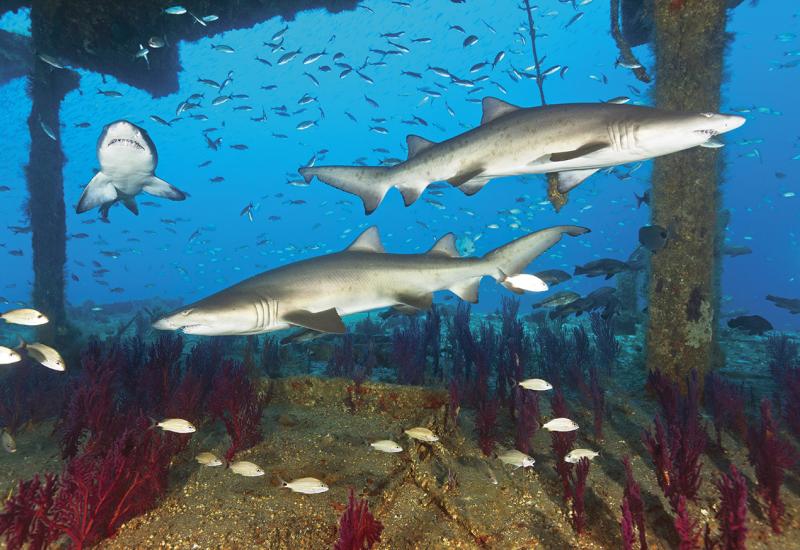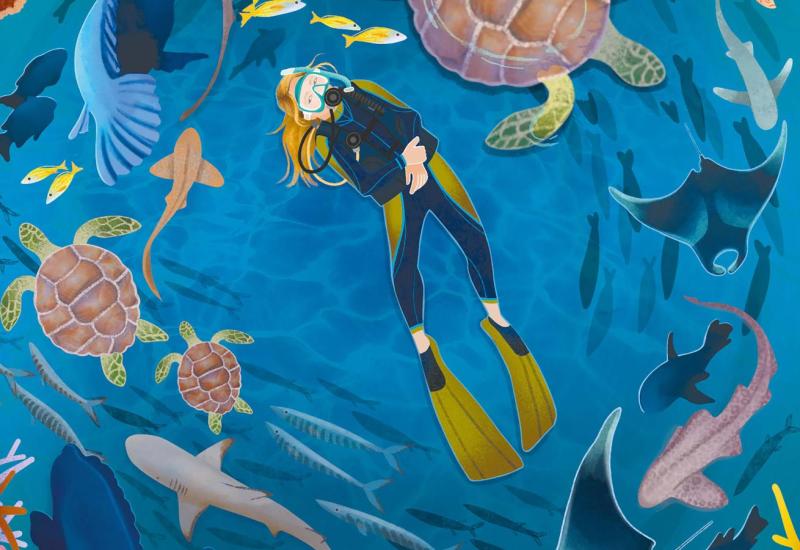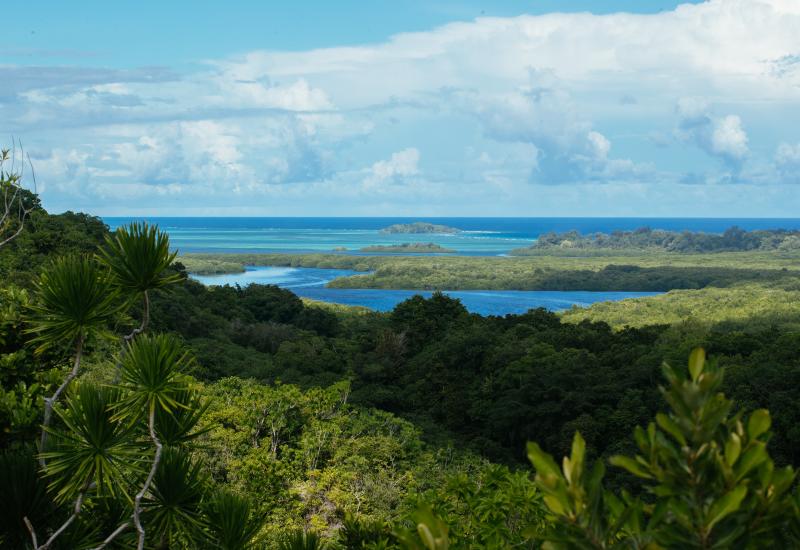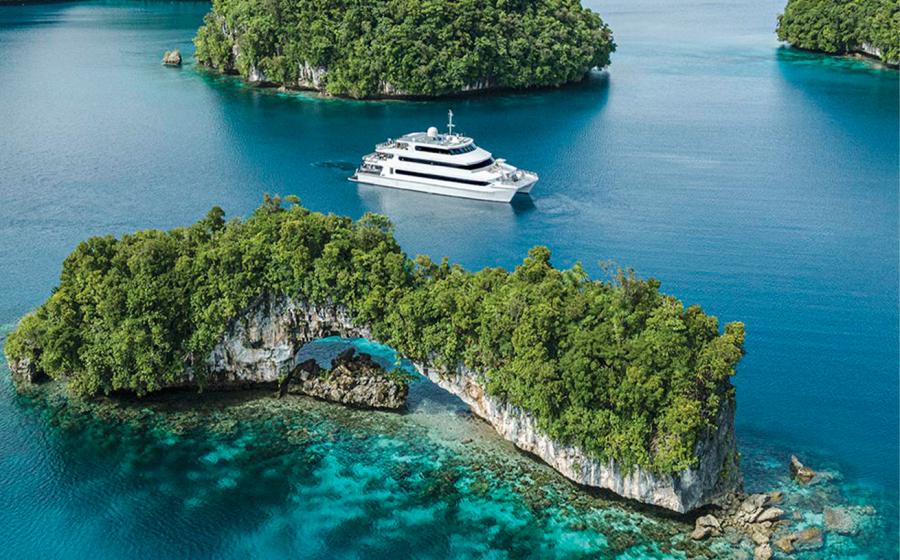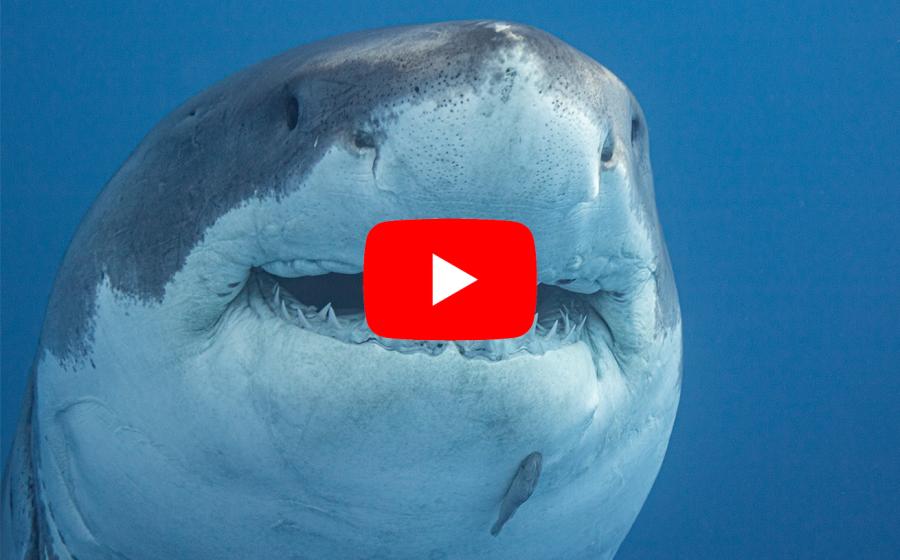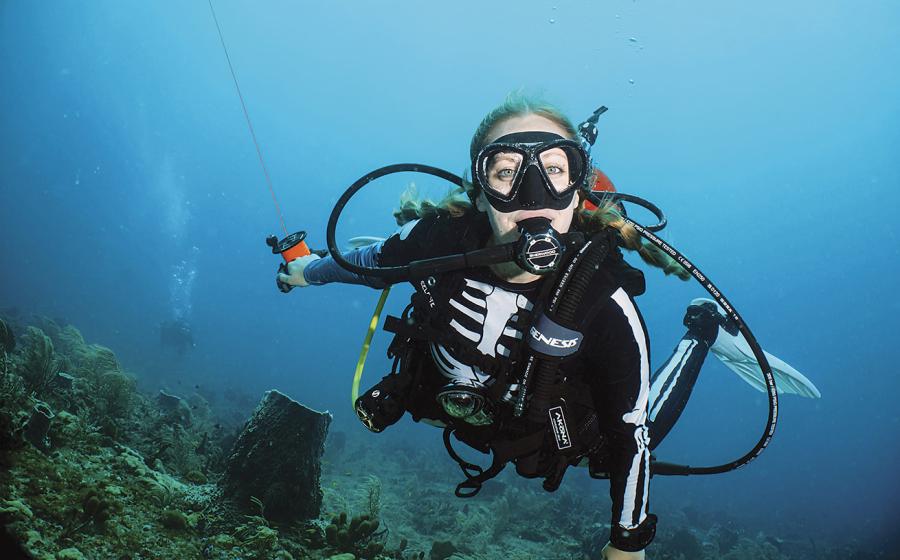Scuba Diving Trip Report: A Palau Primer
The island nation of Palau is located about 500 miles east of the Philippine Islands, at about the same latitude, but despite being close neighbors (geographically speaking) these islands are, in many ways, very different. The Philippines were, for me, mostly about the wonderful macro life. Palau was more about big animals, schooling fish, and interesting reef formations.
We started venturing to Southeast Asia to dive about eight years ago. Over those years, in all the locations we’ve been diving, we’ve noticed an alarming dearth of sharks. Healthy coral reefs need apex predators. Sadly, it appears that most of them have been captured and finned (while still alive!) to feed an enormous and seemingly insatiable market for (perplexingly prestigious) shark fin soup. There are signs that there is finally some much needed change occurring in consumer habits regarding this product. It remains to be seen if it is too late for decimated shark stocks around the world to recover.
In fact, in many locations where I have been diving, there are very few bigger-than-your-fist fish left at all.
In my ten or so trips to Southeast Asia, diving in as many different locations, I’ve seen not more than a couple of dozen sharks, in total. That is tragic. So it was heartwarming to dive the reefs of Palau and see sharks. On. Every. Single. Dive. We spotted white tips, black tips, gray reef sharks and several leopard sharks.
Getting pictures of sharks is difficult (with the Leopard Shark, a bottom lounger, being the easiest to get close to of the ones I listed above). Despite popular folklore, most species of sharks are reclusive animals, and are very wary of humans. Unfortunately that doesn’t help them if long-lined, or netted, or dynamite fished…
So sharky dives were one of the big highlights for me of this trip. Another was the hauntingly beautiful Jellyfish Lake, in which a pocket of the ocean became land-locked at some point in history, and the jellies, lacking the usual predators, evolved into non-stingers. This was a snorkel excursion, and spending an hour or so floating in a salty lake with literally millions of these poetic, benign creatures was lovely.
Palau is also very fishy, and again, it was so wonderful to see large schools of fish – jacks, and snappers, and crescent-tails, and barracuda, and grunts, and even a herd of bumphead parrotfish. The conservation culture of Palau, which recognizes the value of tourism, and seems to nationally embrace it, seems to really be helping to keep a healthy diversity of animals on the reefs and in the blue. As I said above, you don’t see a lot of fish anymore in a lot of locations in this part of the world.
Oh, and turtles. We saw lotsa turtles. And gargantuan giant clams. And flatworms. But we did not see many nudibranchs, or large varieties of anemone fish. If you follow my stuff, you’ll know I am a bit obsessed with anemone fish. ;^)
The reefs of Palau are reasonably colorful and diverse (although I’d have to say not quite as pretty as some other places I’ve been – Fiji, Raja Ampat, Komodo as examples), and we saw a lot of very large sea fans and some huge stands of lettuce coral. Given the amount of divers in the water (it is a very popular dive destination), and some of the very poor diving practices we witnessed, it was amazing to me that many of the fans and large corals did not yet have signs of diver damage.
Chandelier Cave, a very shallow cavern dive, was cool too. The archipelago of Palau (comprised of hundreds of islands and islets) was formed from limestone, and so is very porous and easily eroded. We dove the famous Jakes Seaplane wreck, just minutes from the harbor in Kuror, as well as a nearby freighter wreck. It is my understanding that there is plentiful wreck diving in Palau — mostly WW2-related sinkings. We also did several dives featuring blue holes, tunnels and caves, and we dove some pretty vertiginous walls. Palau certainly offers a broad menu of delicious diving.
And then there was Blue Corner — a revered dive site, often cited in ‘Top Ten Dives in the World’ lists. Hit it right, and it is magic. Hit it wrong and it can be hair-raising. We did it both ways, with the hair-raising version going down in my dive history as the gnarliest current dive I have done to date.
And finally, Palau is about interesting and poignant history. We did a full day land tour of Peleliu Island – the scene of one of the major land engagements between the Japanese and the US. It was informative and educational, and despite the passage of years, there is still abundant war memorabilia to see, both in the small museum, and literally scattered around the island.
We had an extra day after we got off the live aboard before flying home, and so we hired a local guide to take us on a cultural tour of Koror, the main island of Palau. It was very interesting and enlightening to learn about the people and their history.
As a popular divers’ destination, Palau is well set up with hotels, restaurants, and numerous dive operations. Several live aboard companies also have boats in the area. Our combination of a few days of land-based diving and tours, and a week on a dedicated dive live aboard, was ideal.
Judy G is a traveling underwater photographer. Check out her blog HERE and follow her on Facebook: Judy G Diver
More from Judy G
Don't Be This Diver — What Not To Do Underwater
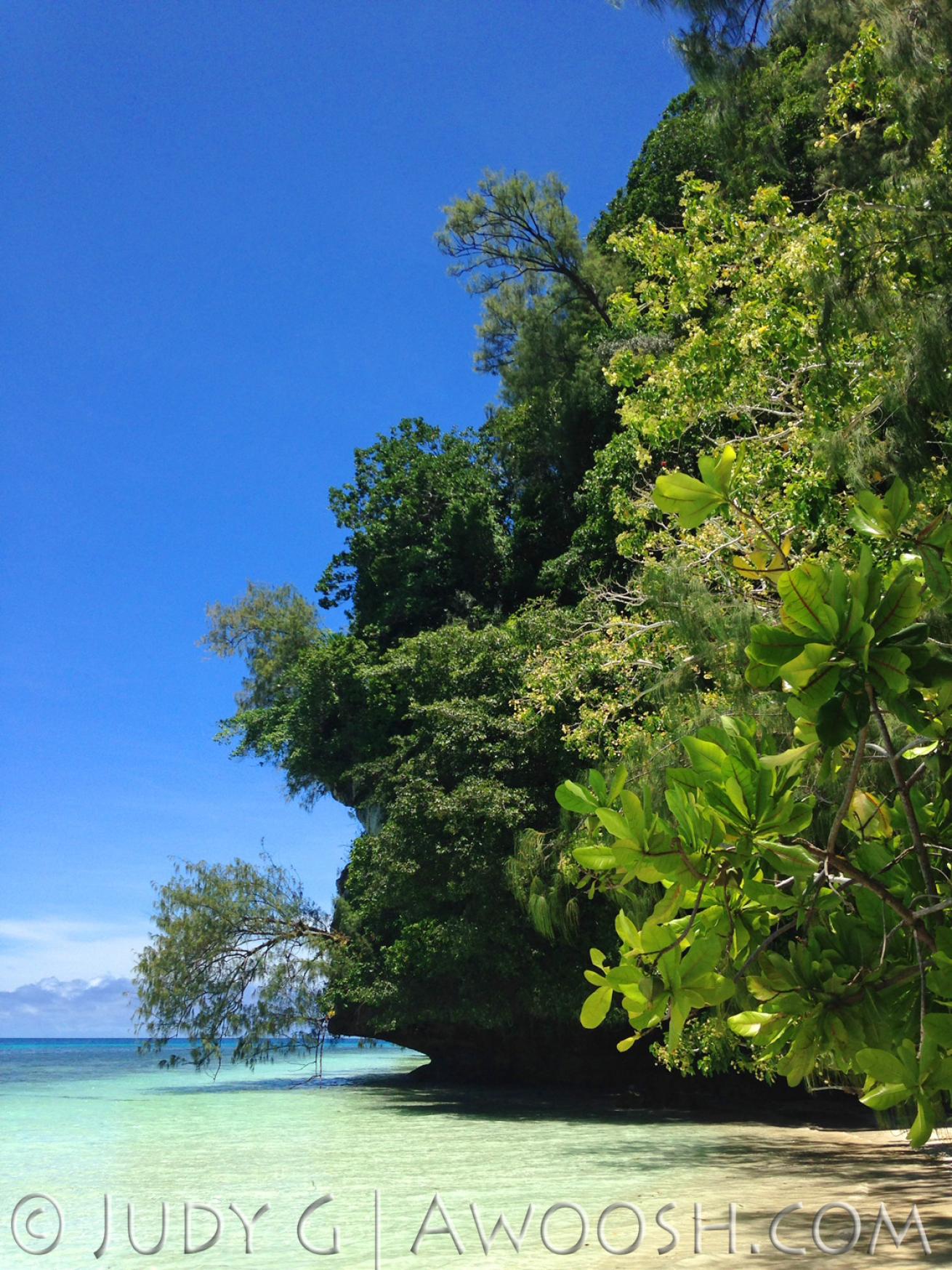
Judy GSeascape at Ulong Island
Seascape at Ulong Island
This pretty beach is on the island where the Survivor Palau and Survivor Micronesia series were shot.
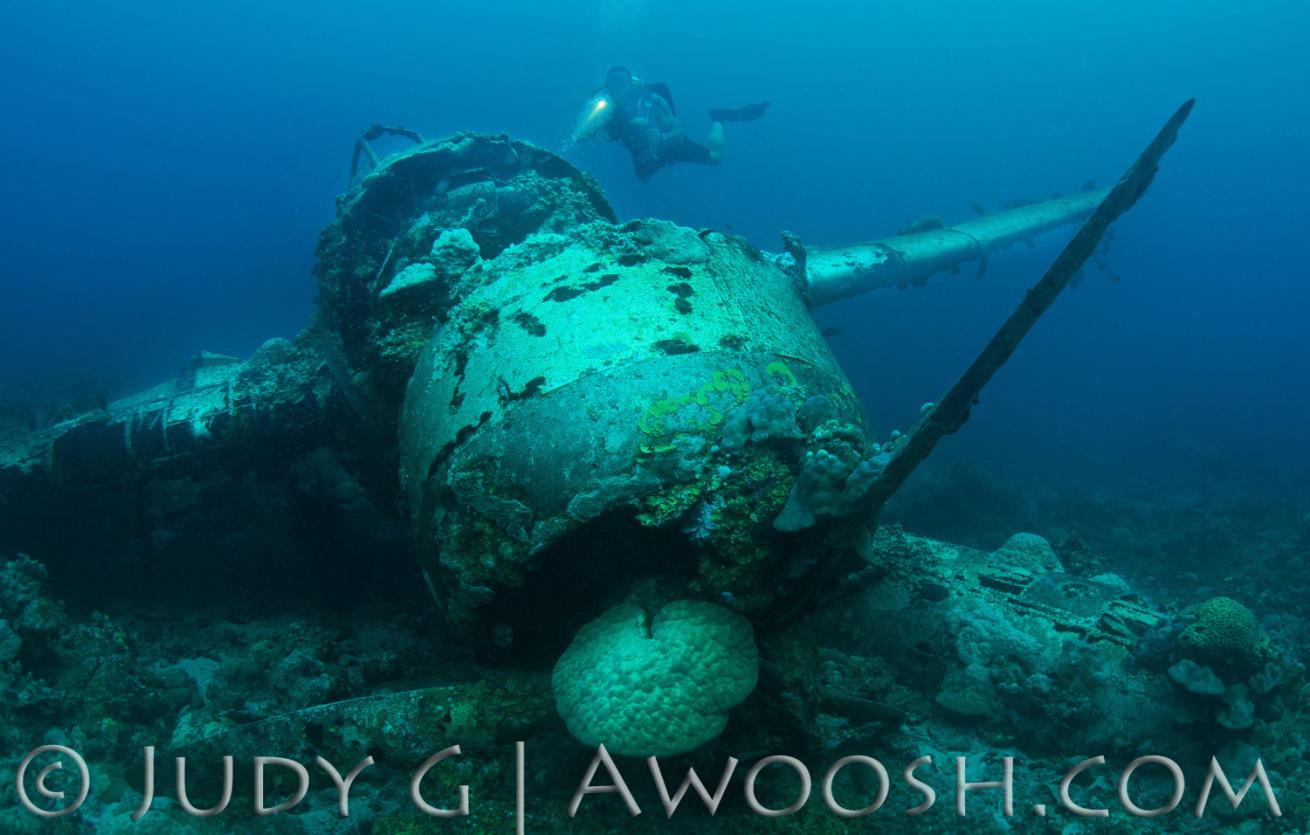
Judy GJake's Seaplane Wreck Palau
Japanese Jakes Seaplane Wreck
Located in shallow water just minutes from the harbor in Kuror, this is a very popular dive site.
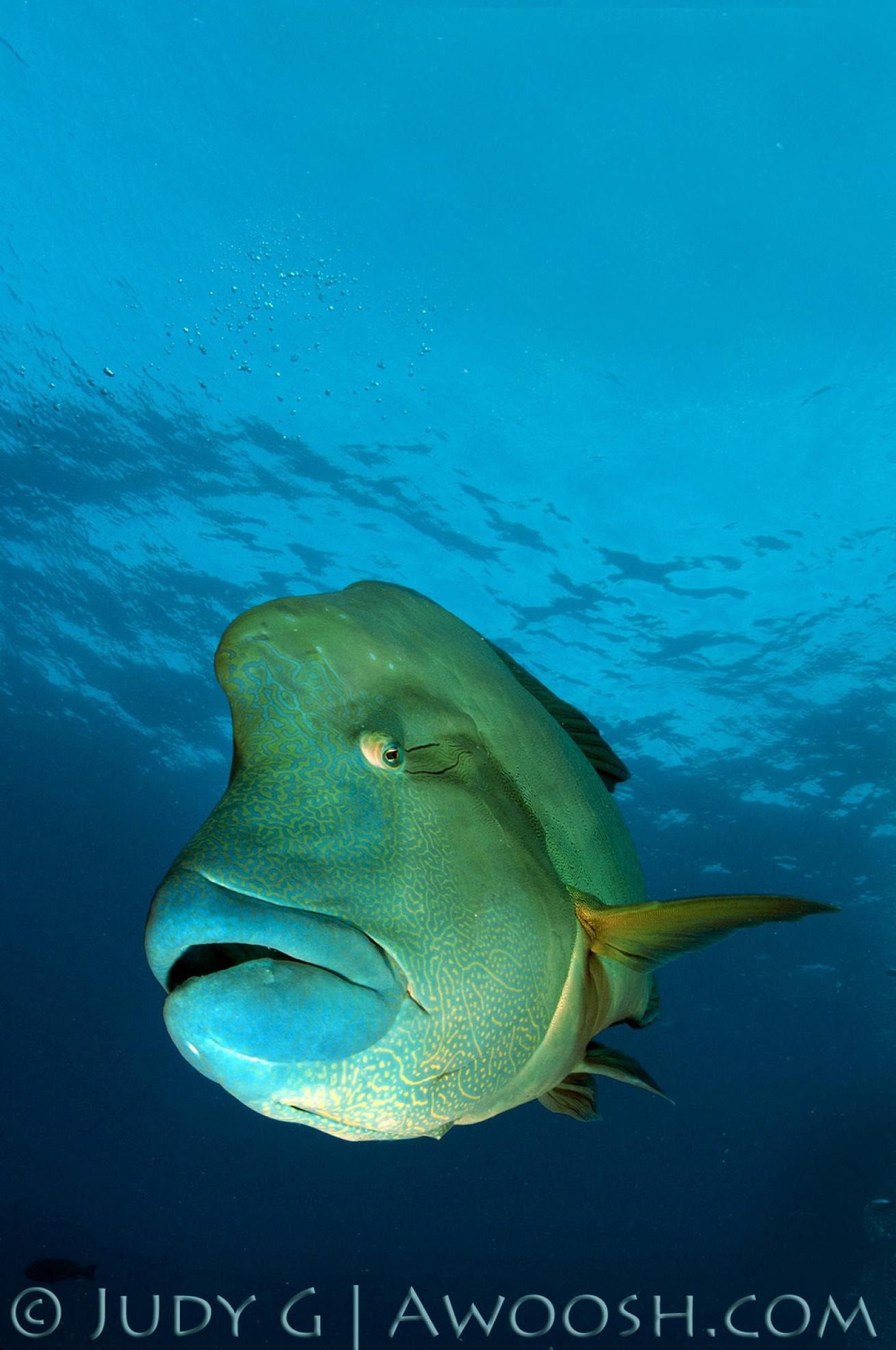
Judy GNapoleon Wrasse at Blue Corner, Palu
Just Call Me Napoleon
There are a couple of very friendly Napoleon Wrasse at Blue Corner dive site in Palau. Normally, these fish are very nervous around divers, but these fellows have apparently been tamed by local dive guides who hand feed them hard-boiled eggs.
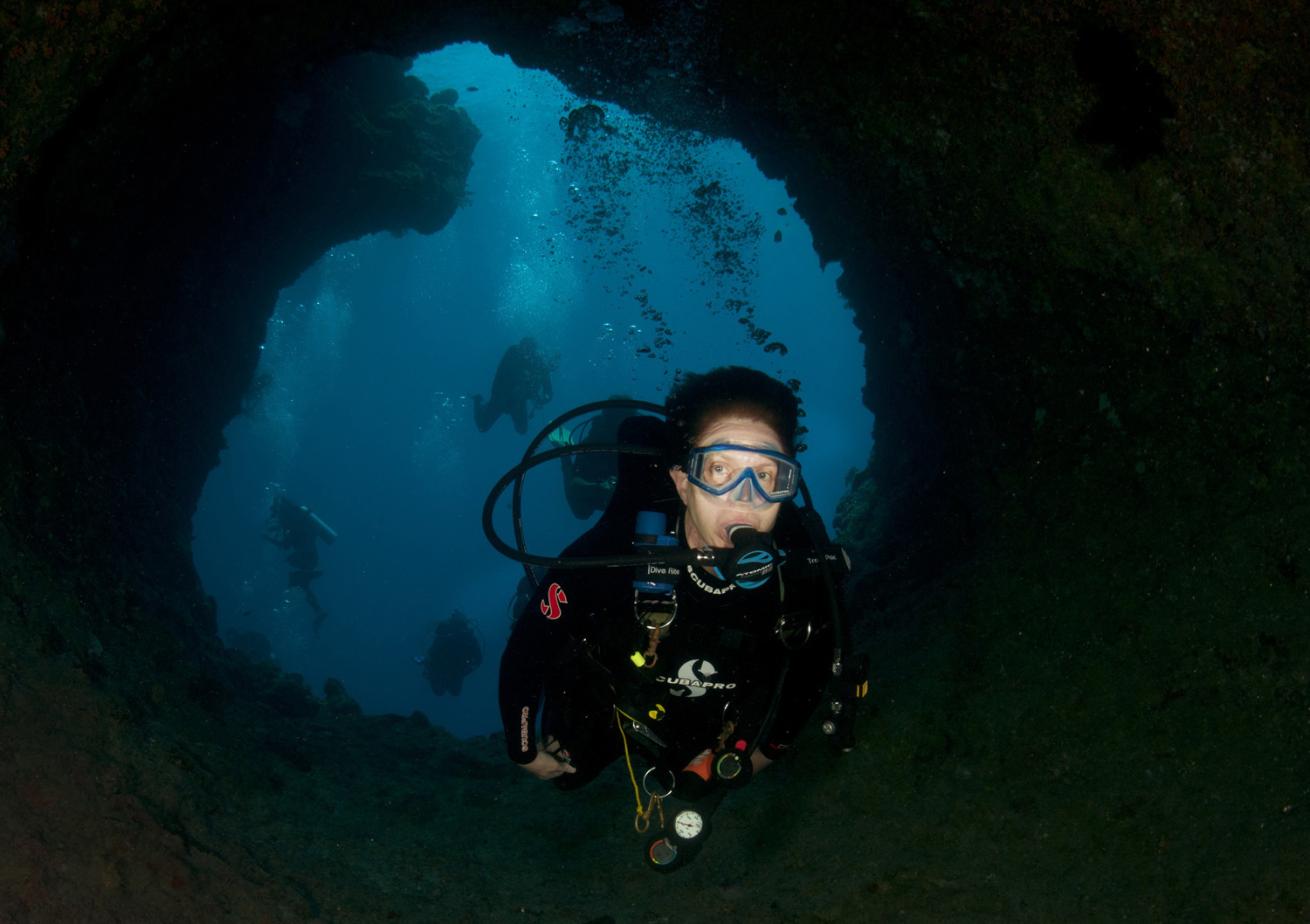
Judy GBlue Hole Palau
Diver in Blue Hole
This was one of many interesting reef formations that we dove in Palau.
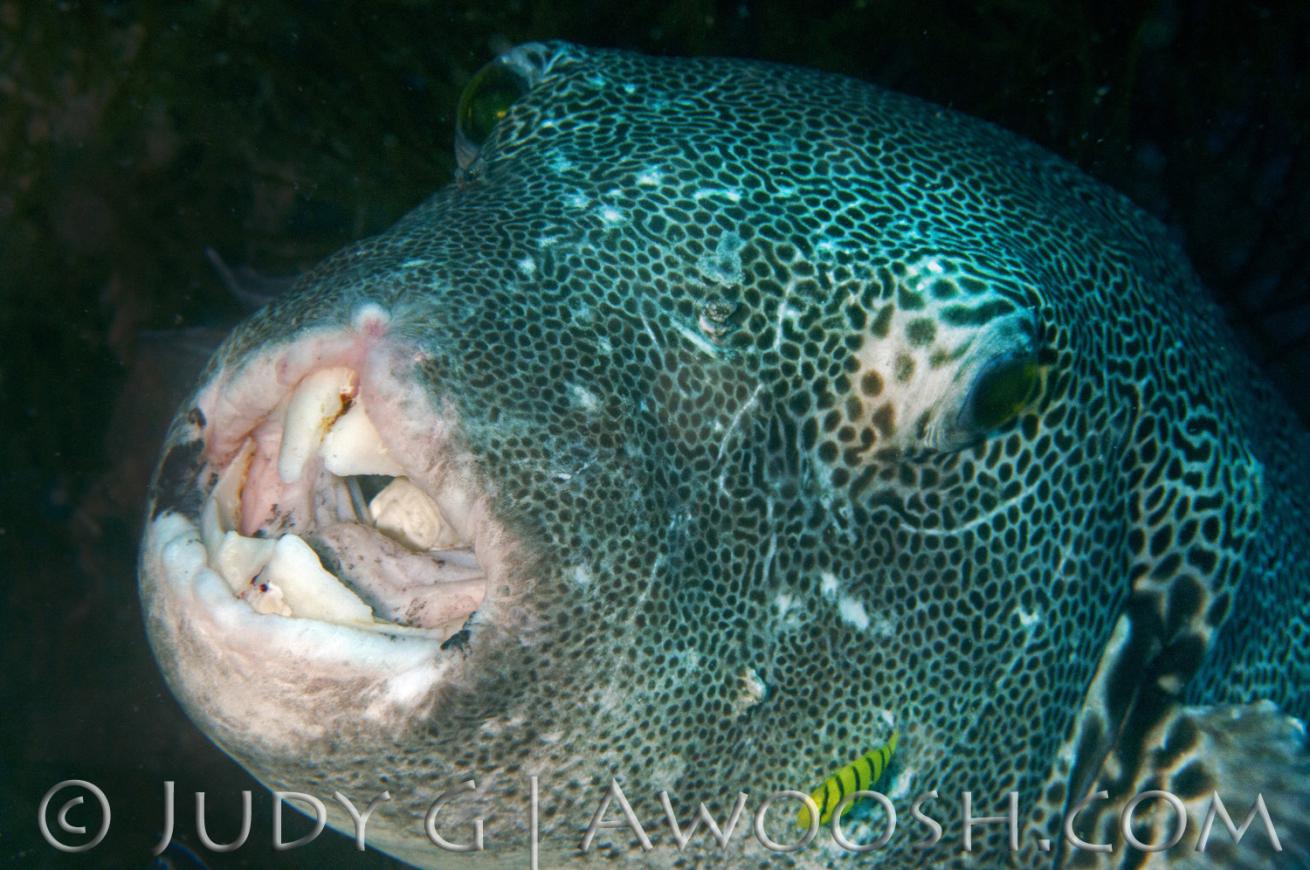
Judy GLarge Spotted Pufferfish in Palau
Is There an Orthodontist in the House? ;^)
Seriously, this large spotted pufferfish uses those bucked and gnarly teeth to crunch on crispy critters.
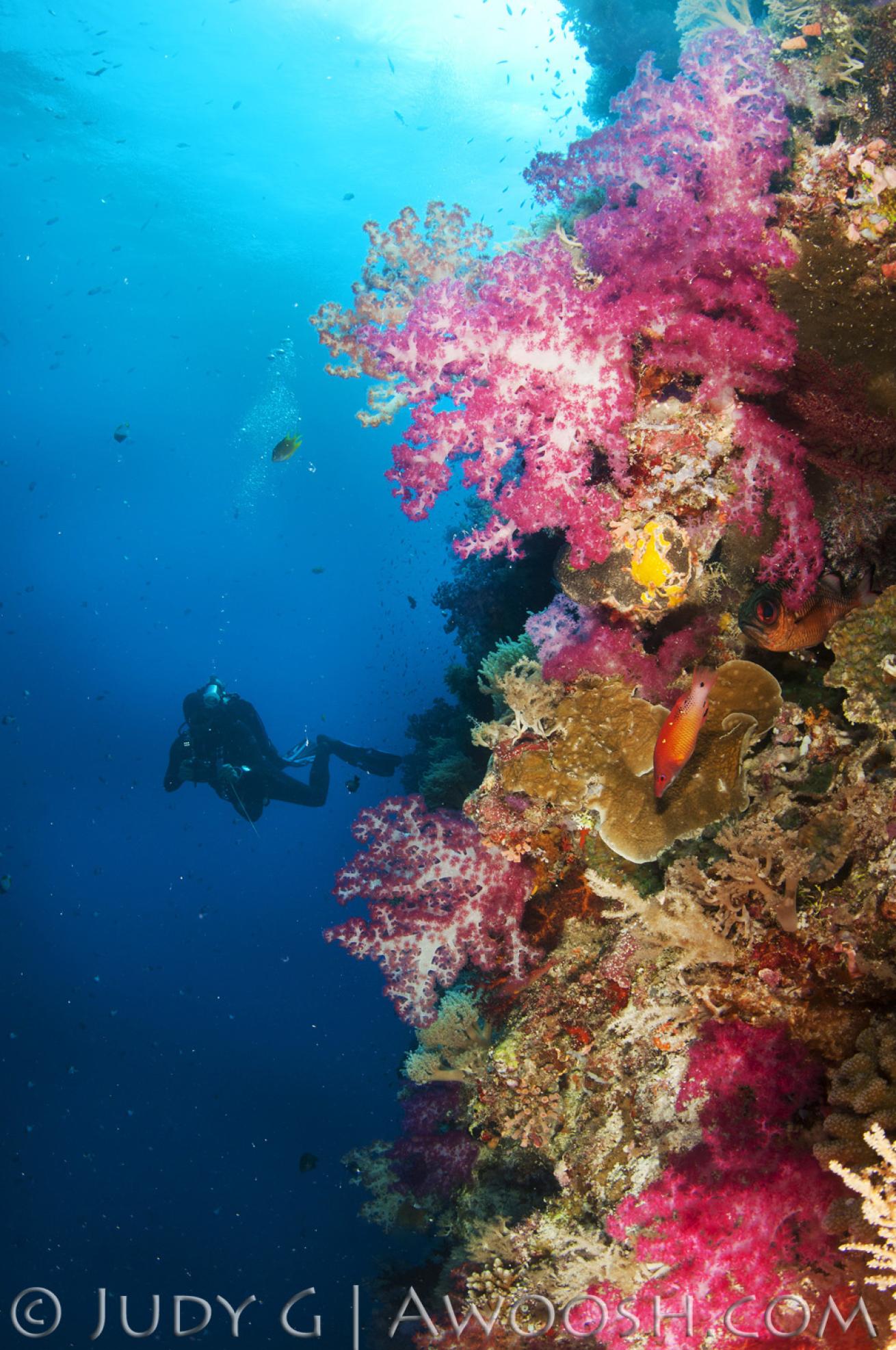
Judy GPink Soft Corals in Palau
Colorful Wall
This was the most colorful wall I photographed while in Palau — the hot pink soft corals were gorgeous.
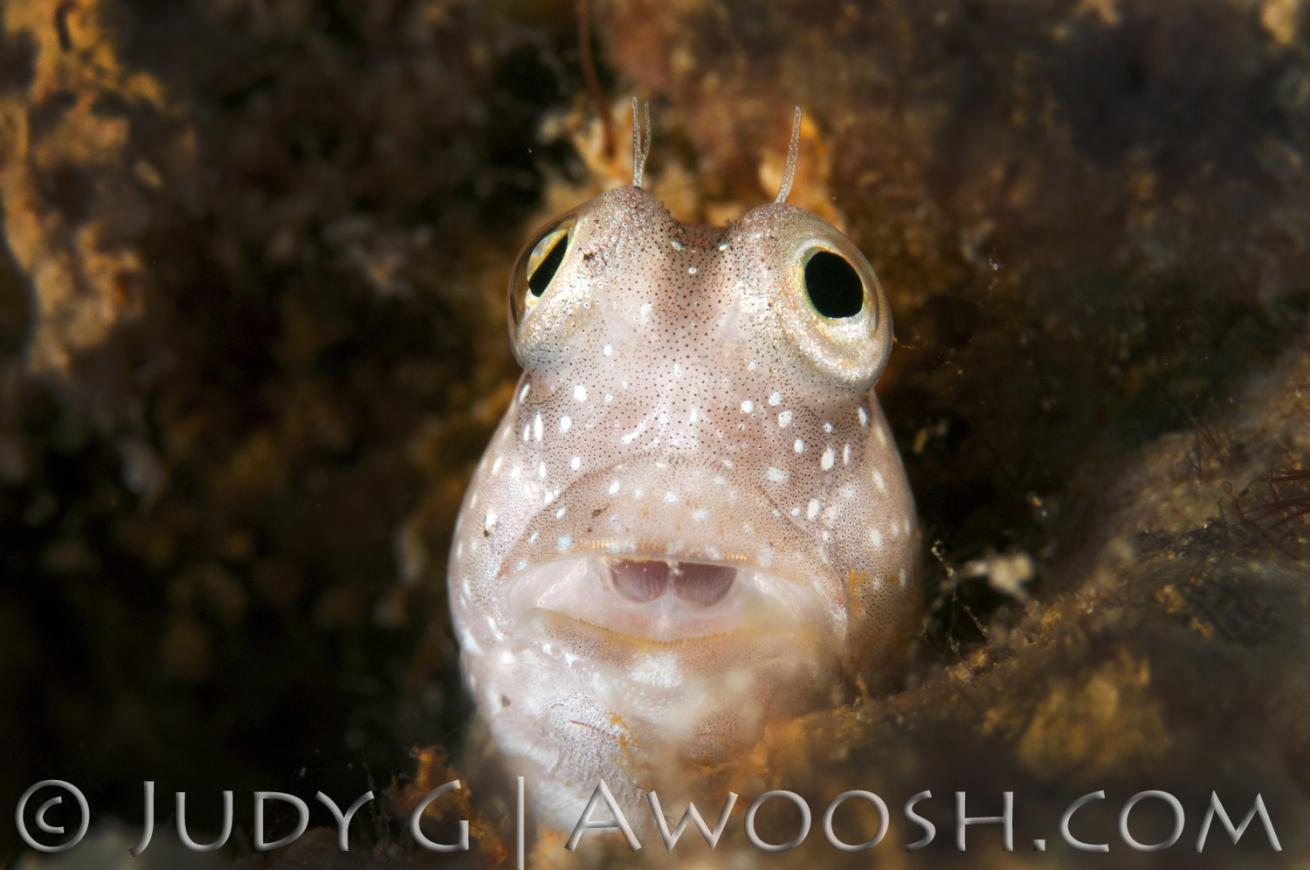
Judy GBlenny Underwater in Palau
Sesame Street Blennie
This adorable little blennie was about an inch in length.
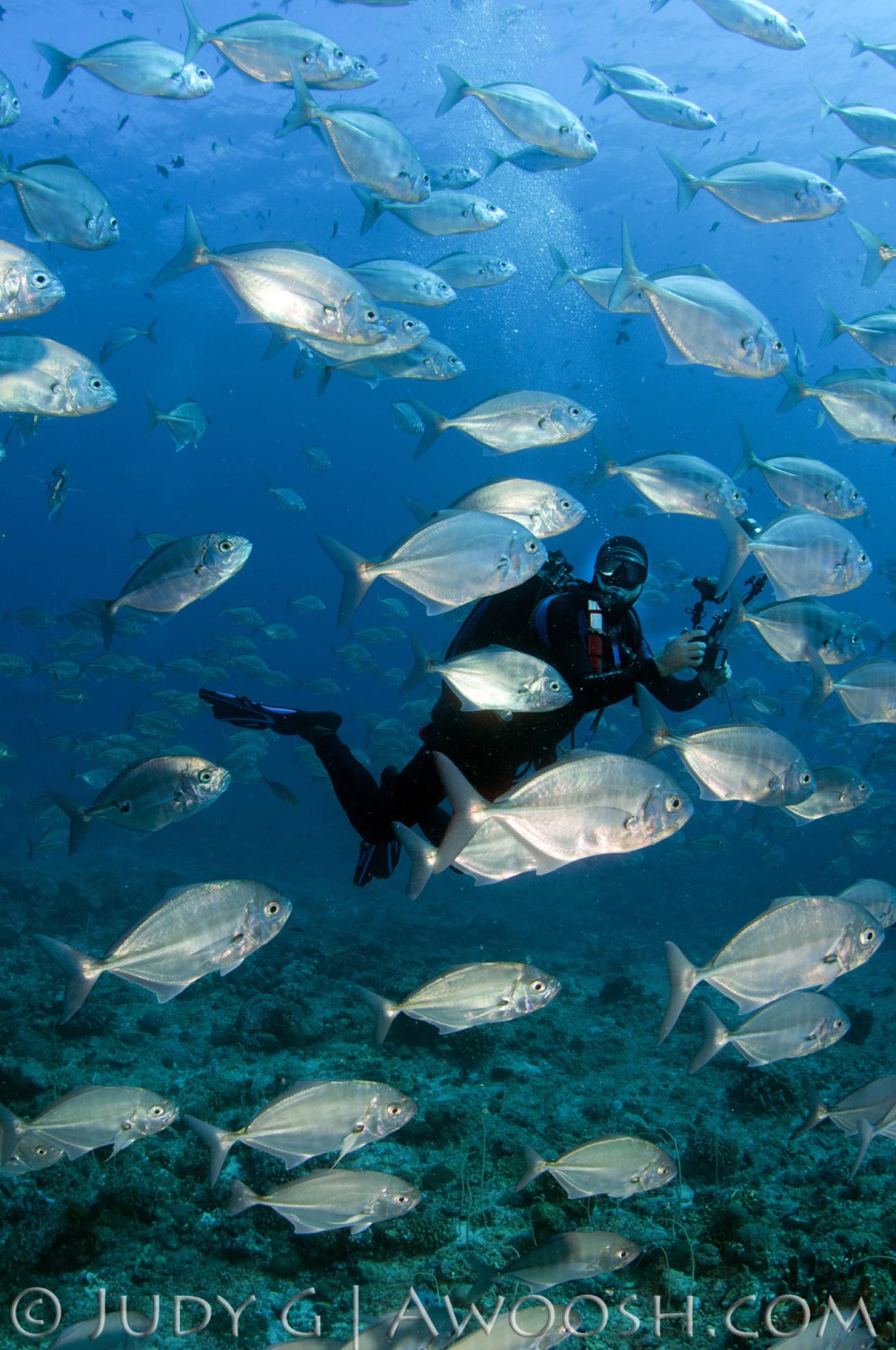
Judy GSchooling Fish in Palau
Scads of Fish
As I wrote in the accompanying piece, Palau is notable for its healthy schools of fish.
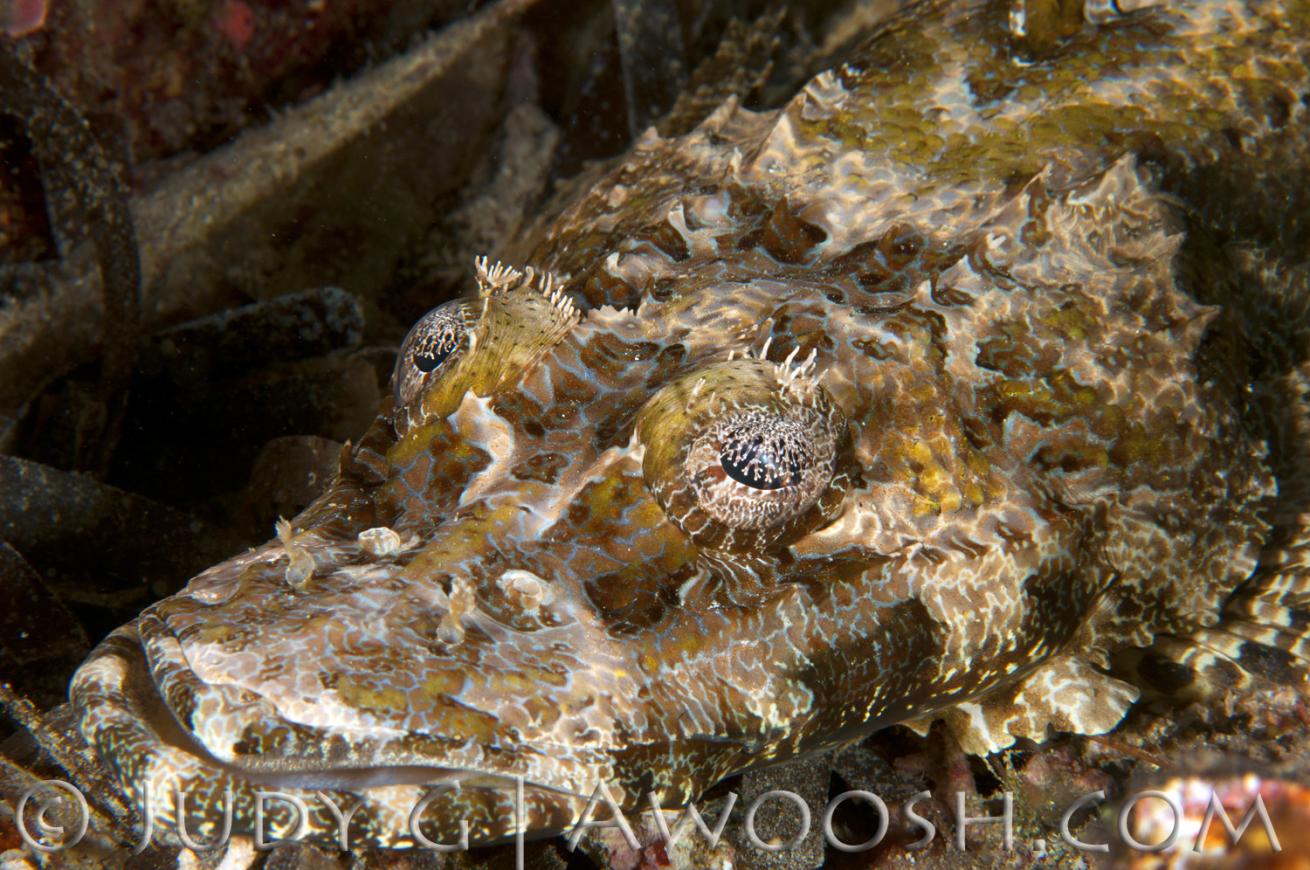
Judy GCrocodilefish in Palau
Crocodilefish
We saw quite a few of these masters of camouflage. These fish grow up to a couple of feet long.
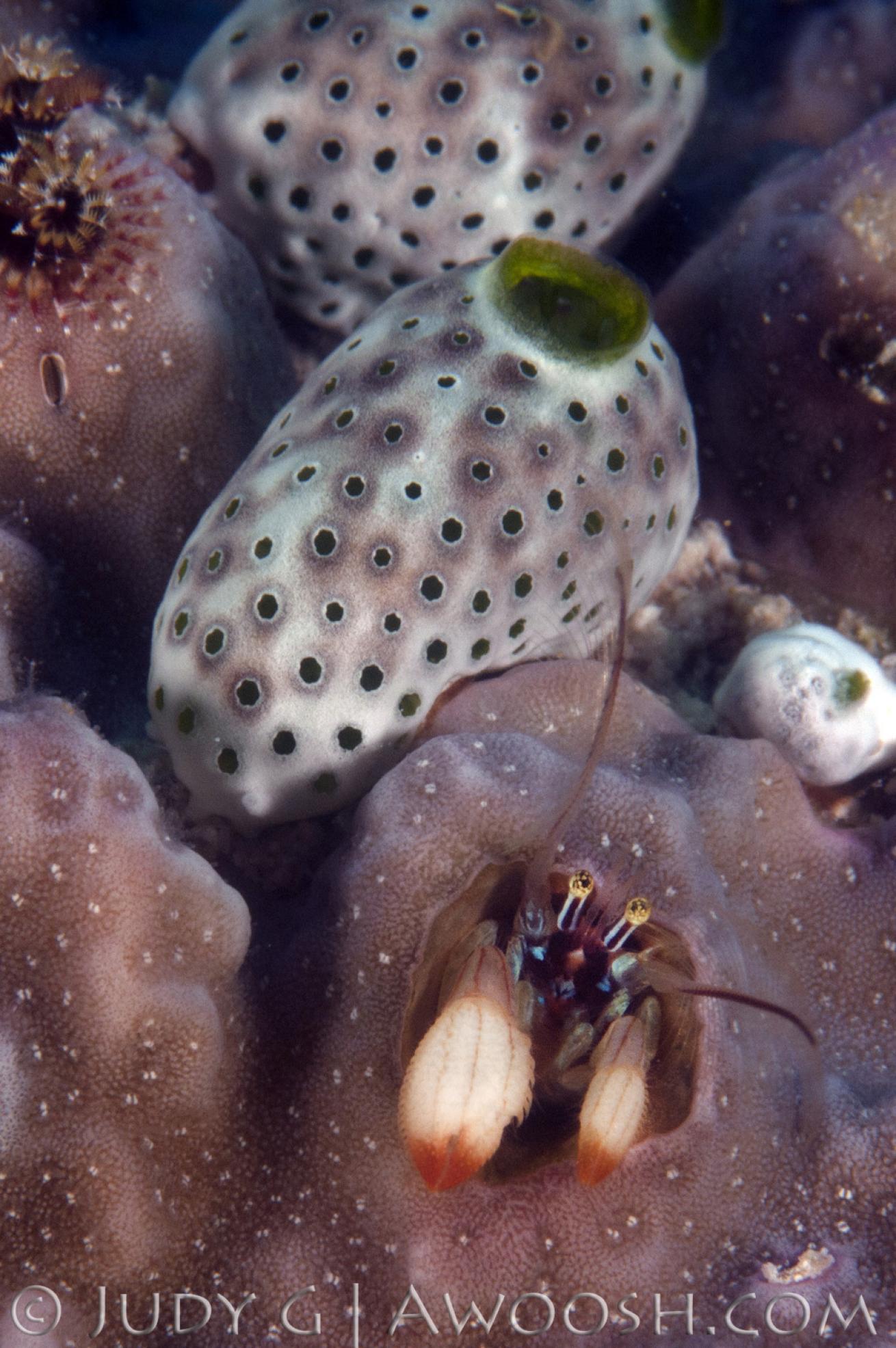
Judy GCoral Hermit Crab in Palau
Coral Hermit Crab
Like anemone fish, I can be entertained for long interludes trying to photograph these tiny creatures. These little crabs occupy holes originally drilled out by worms. They grow to about one third of an inch long, and use their long frond-like sweepers to capture plankton and other very small flyby critters upon which they feed.
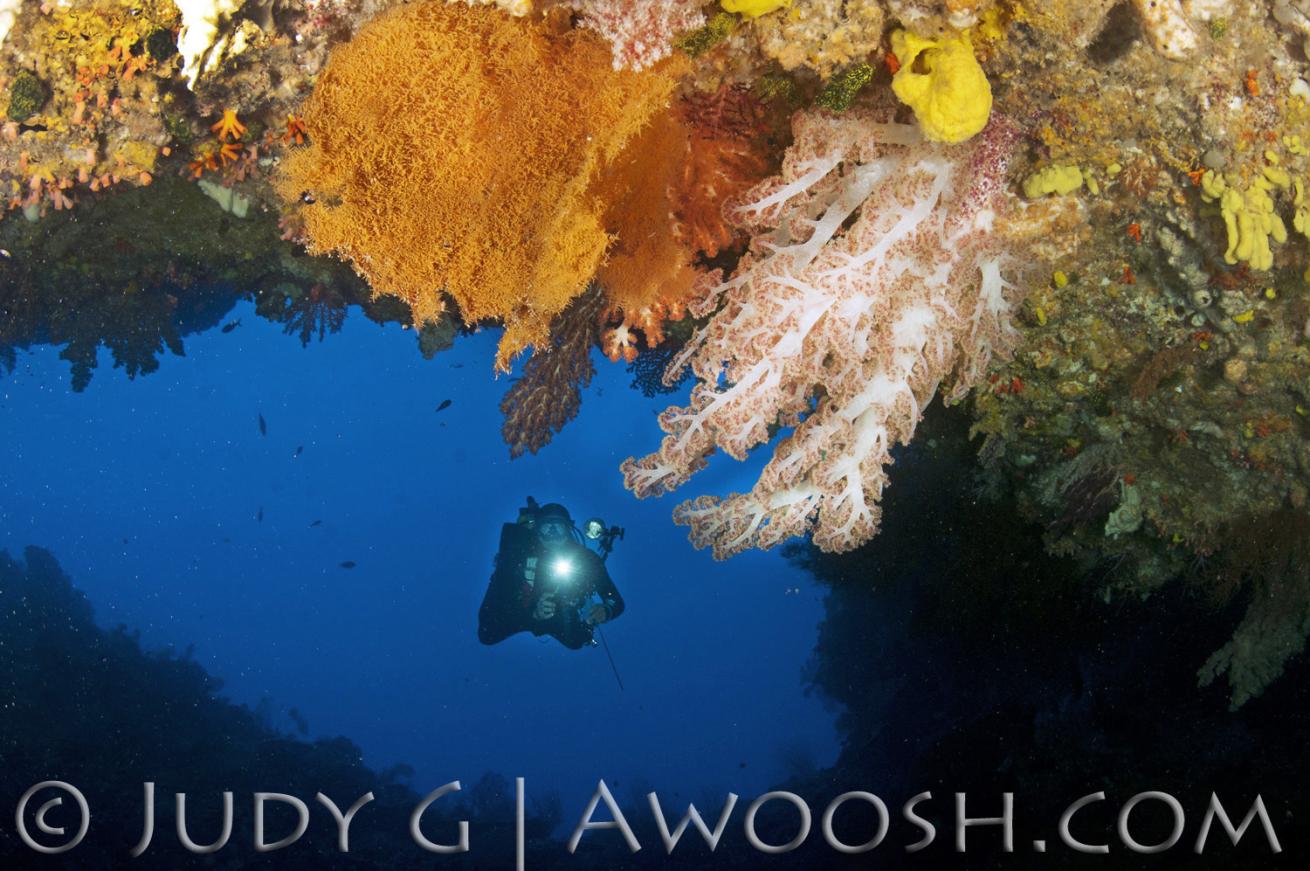
Judy GDiver in Blue Hole in Palau
Diver in Blue Hole 2
This pretty site had several navigable holes — with this one being decorated by colorful soft corals, gorgonians and sponges.
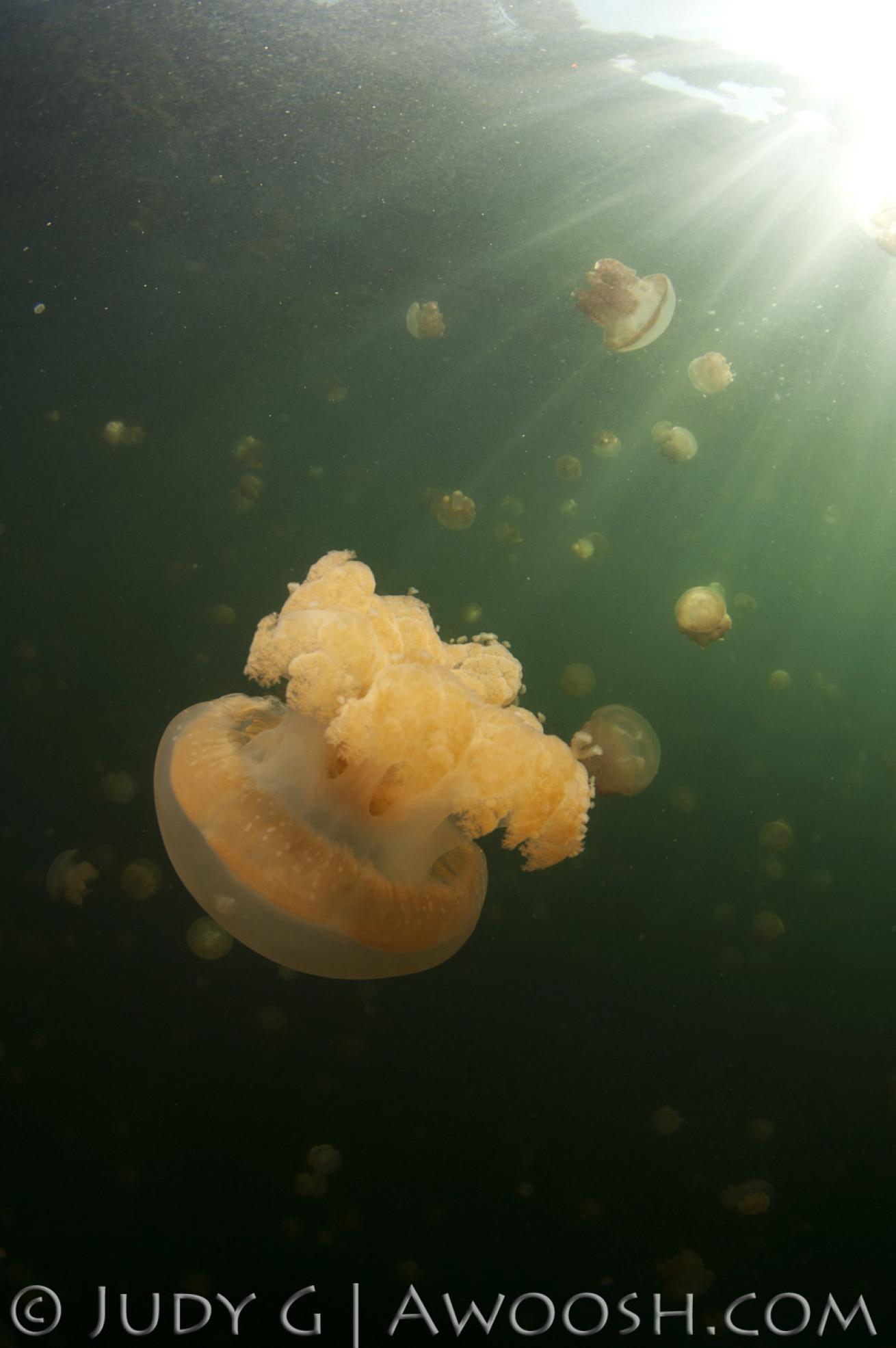
Judy GJellyfish Lake Palau
Jellyfish Lake
Serene, otherworldly, poetic — I loved the time I spent snorkeling in this salty lake.
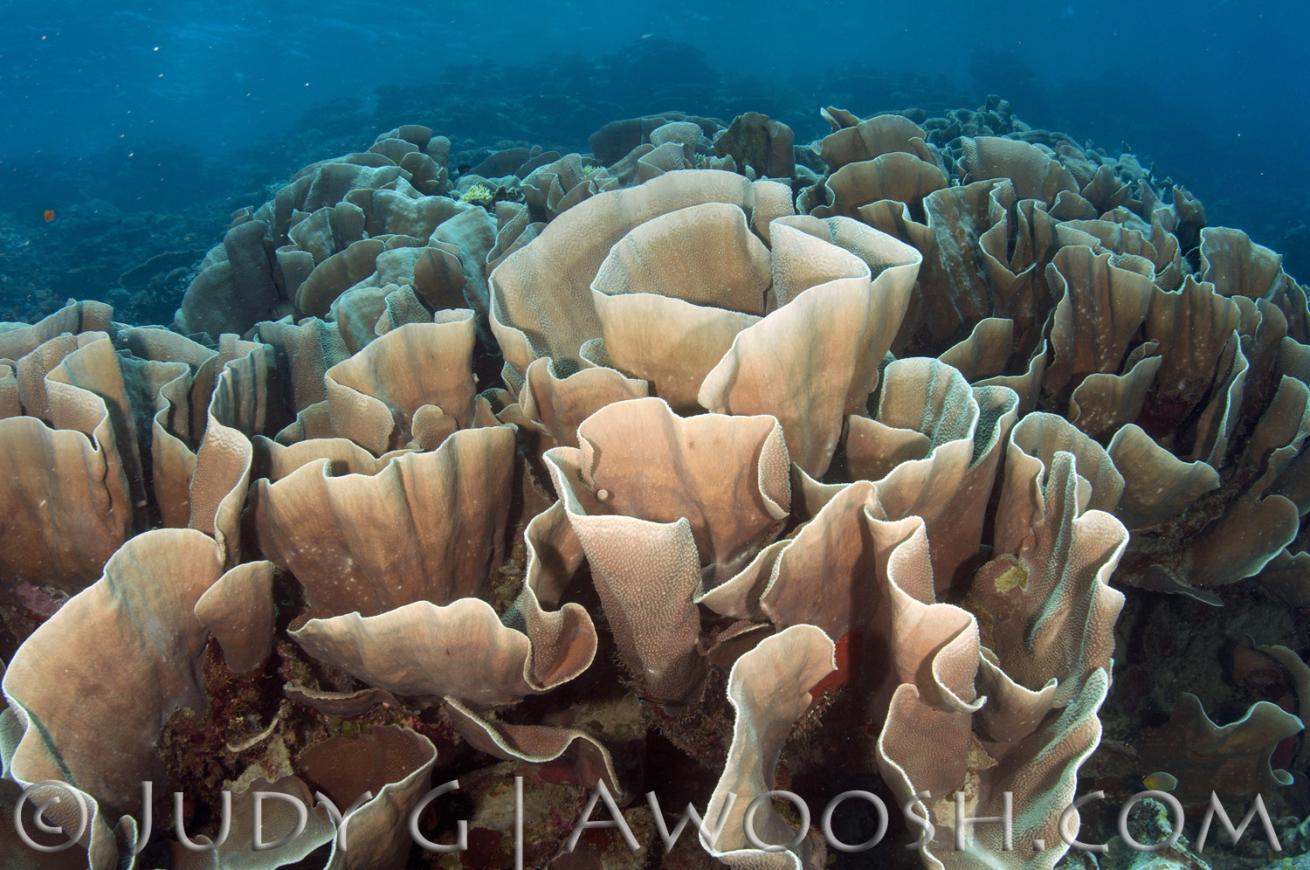
Judy GLettuce Coral in Palau
Lettuce Coral
Several huge stands of these lettuce corals can be seen in Palau — I photographed this one in Ulong Channel.
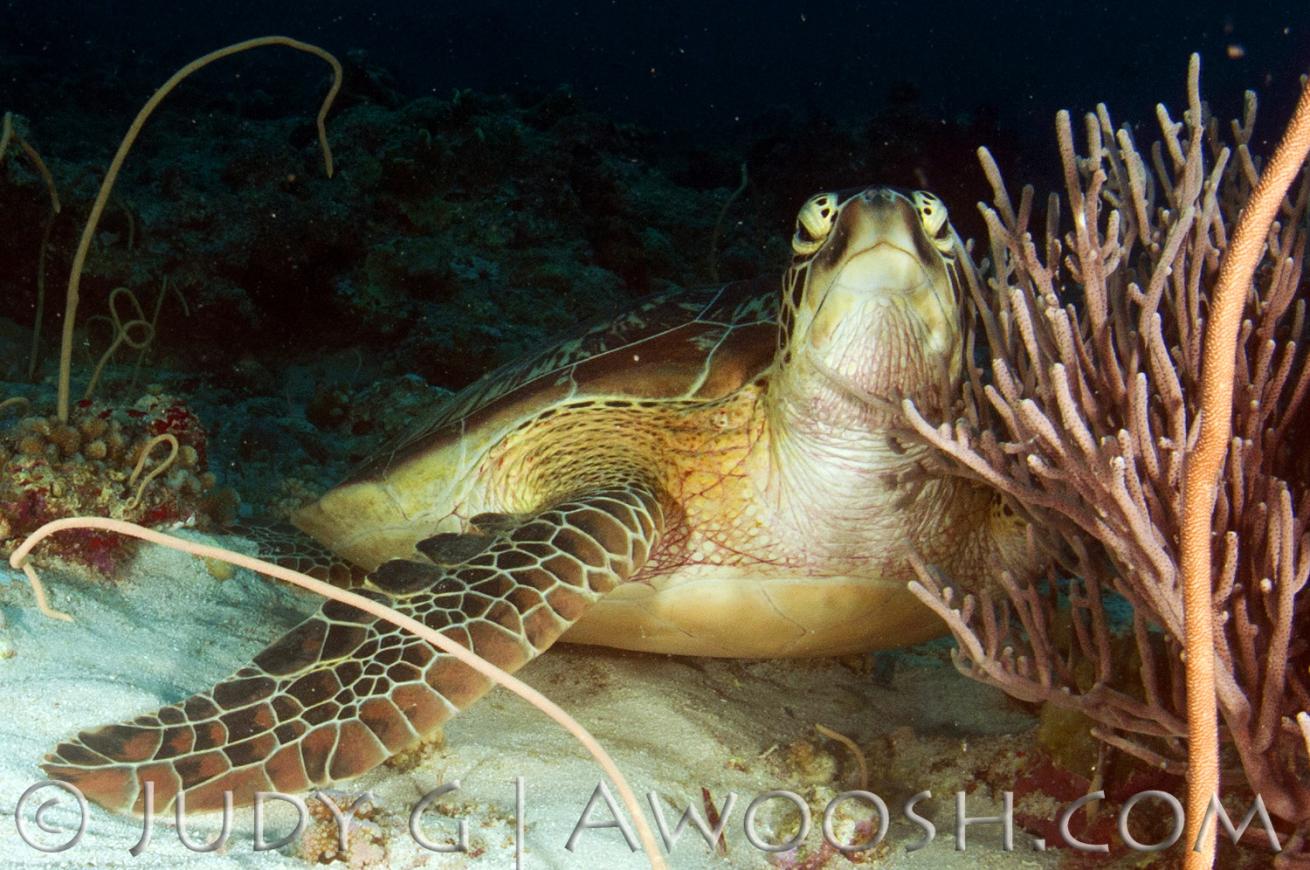
Judy GSea Turtle Underwater in Palau
Turtle Poser
We saw a lot of turtles in Palau, most of which seemed pretty habituated to divers, so a close approach like this was possible.
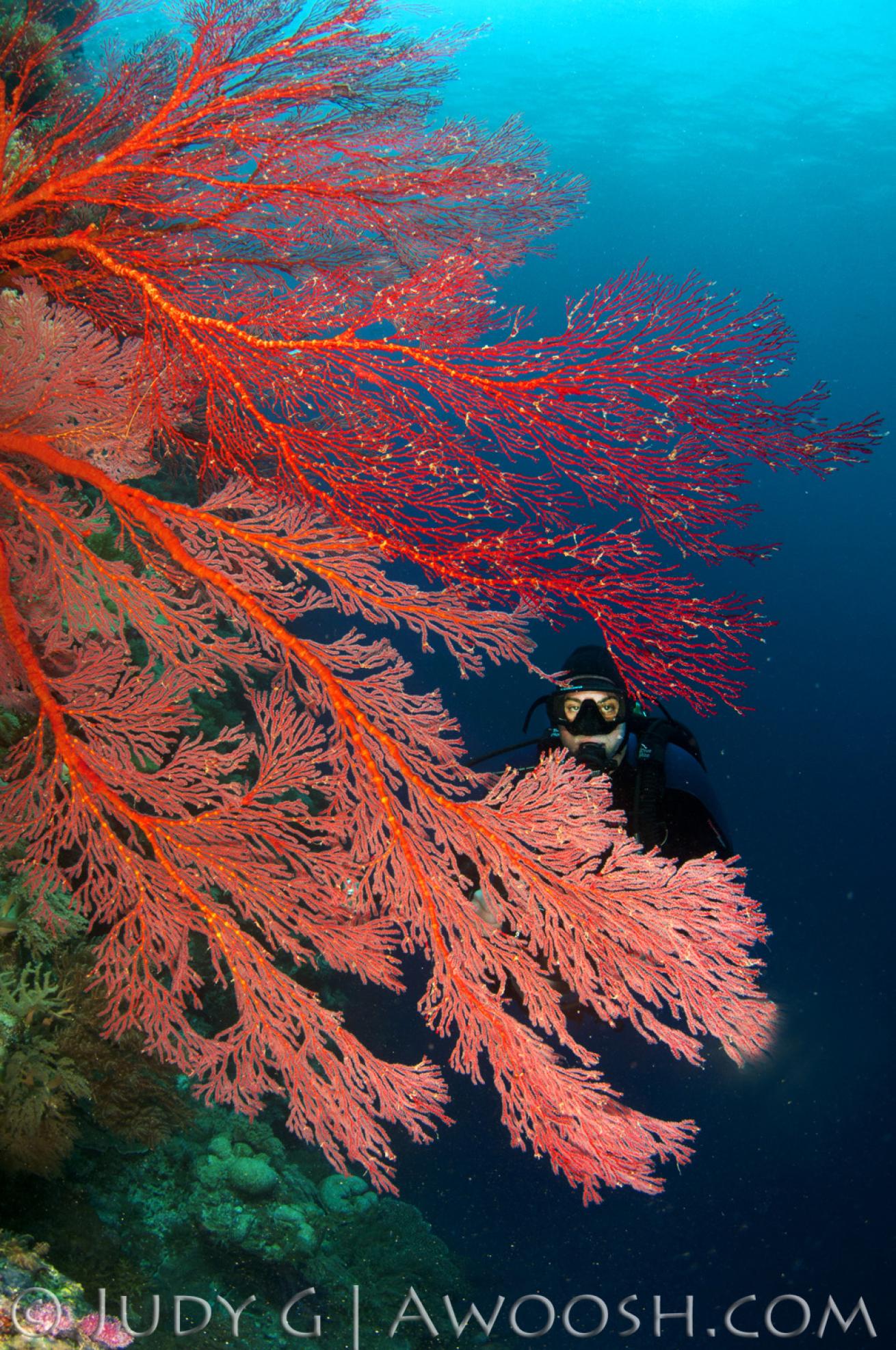
Judy GGorgonian Sea Fans in Palau
Gorgonian Sea Fans
Palau has a lot of fans — both divers and gorgonian sea fans like these. These were very large — about 5 feet across.
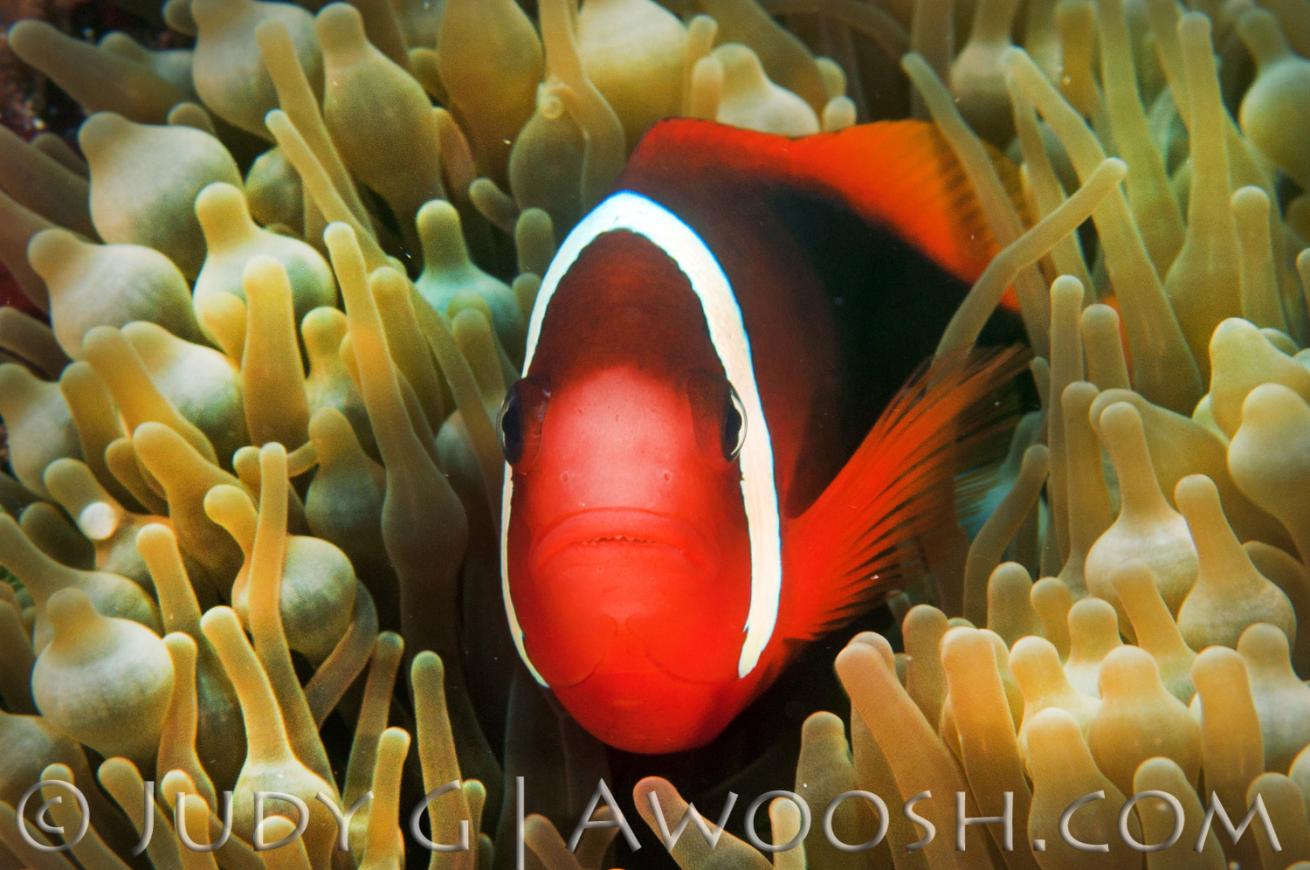
Judy GTomato Anemone Fish in Palau
Tomato Anemone Fish
As I mentioned in my write up, we did not see as many varieties of anemone fish in Palau as we have seen in other parts of the Indo Pacific, so seeing this Tomato Anemone Fish caused some excitement.
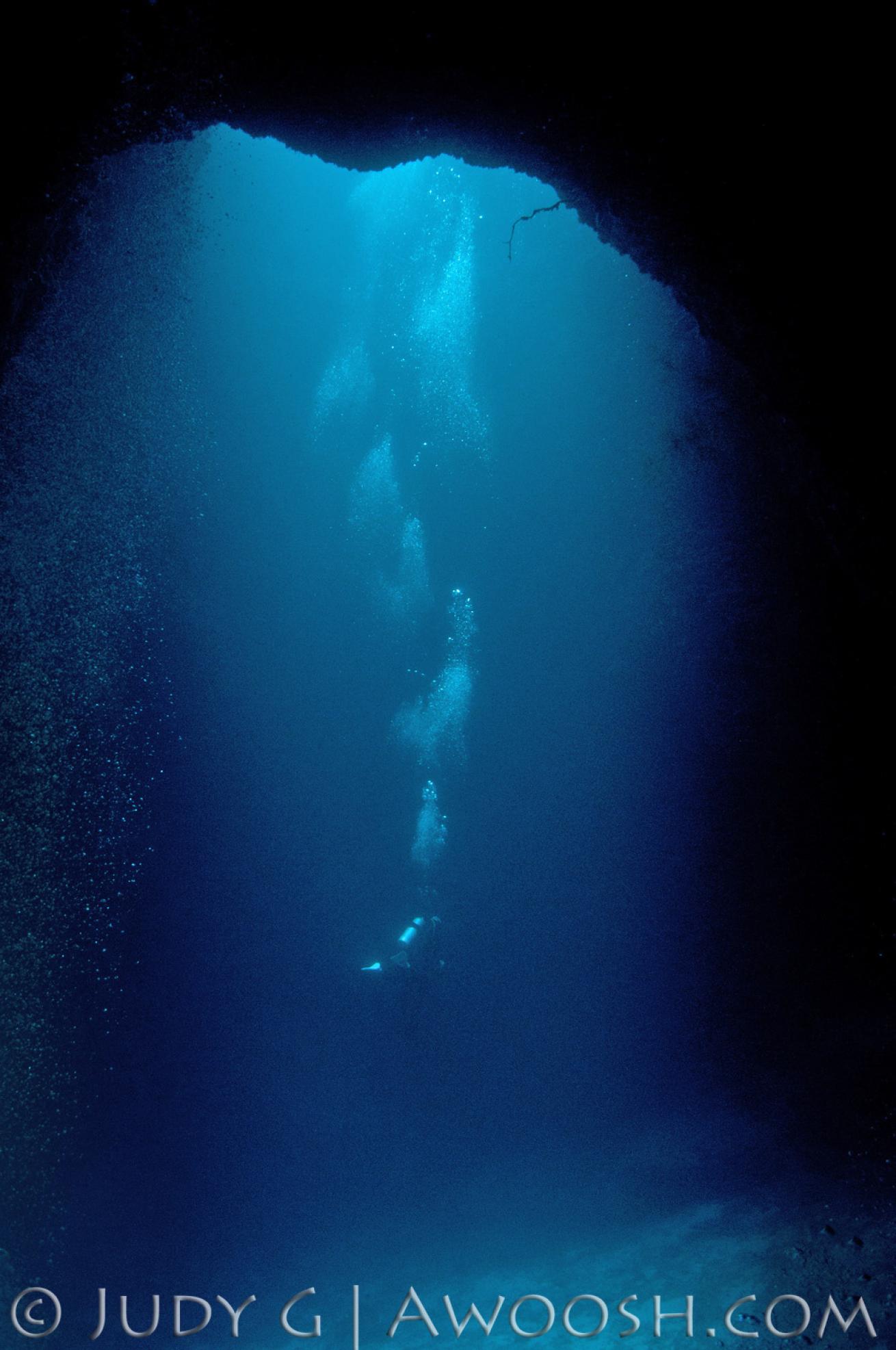
Judy GDeep Blue Hole Palau
Deep Blue Hole
Diving this particular formation at the right time of day results in a beautiful column of light shining down from the blue hole in the reef above.
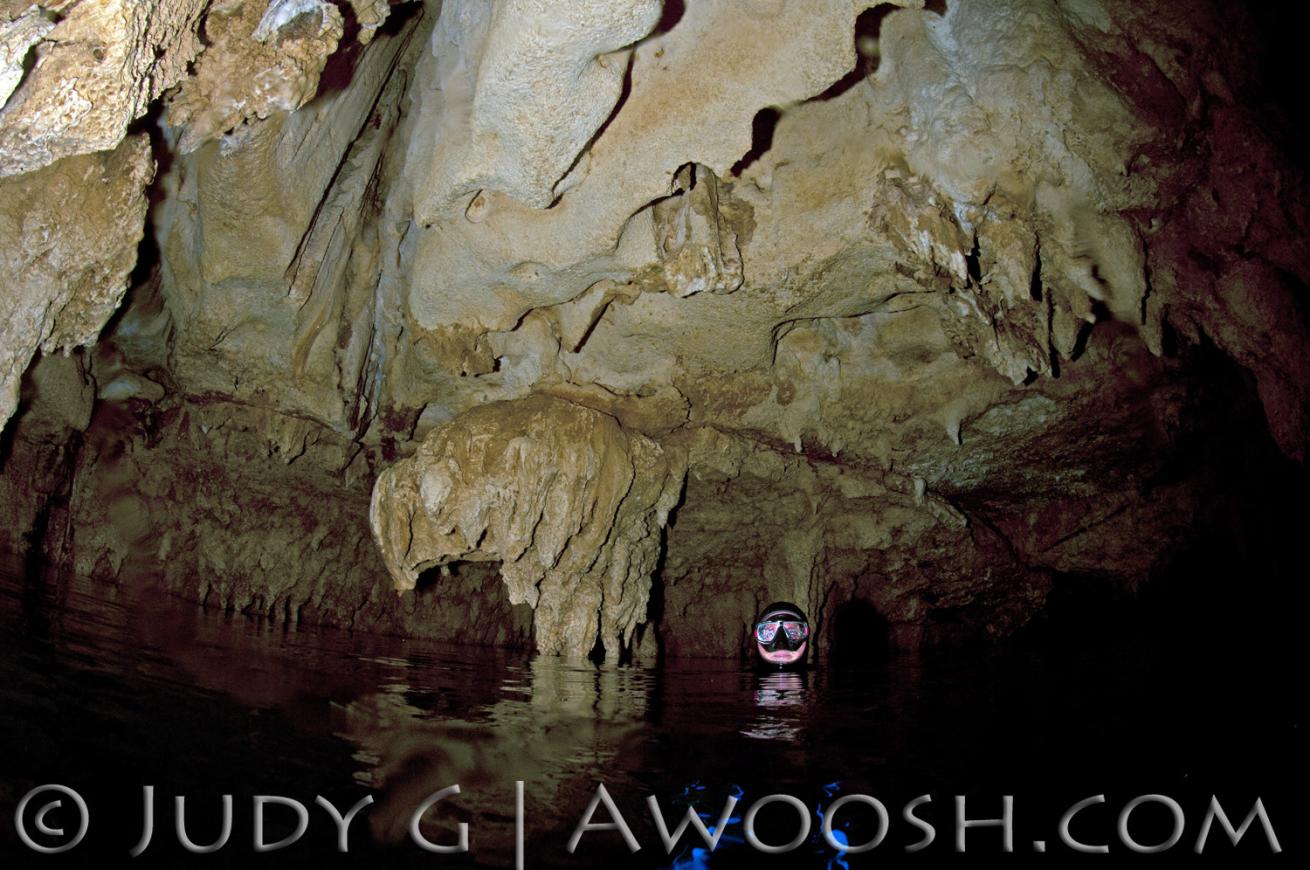
Judy GCathedral Cave Limestone Formations in Palau
Cathedral Cave Limestone Formations
This is a shallow dive, very near to the harbor on the big island of Kuror, and so is a popular choice for the last dive of a trip. There are several chambers in the cavern, and surfacing to shine a light on the gorgeous stalactites is a highlight. A dive guide and a good underwater light are essential to safely do this dive.
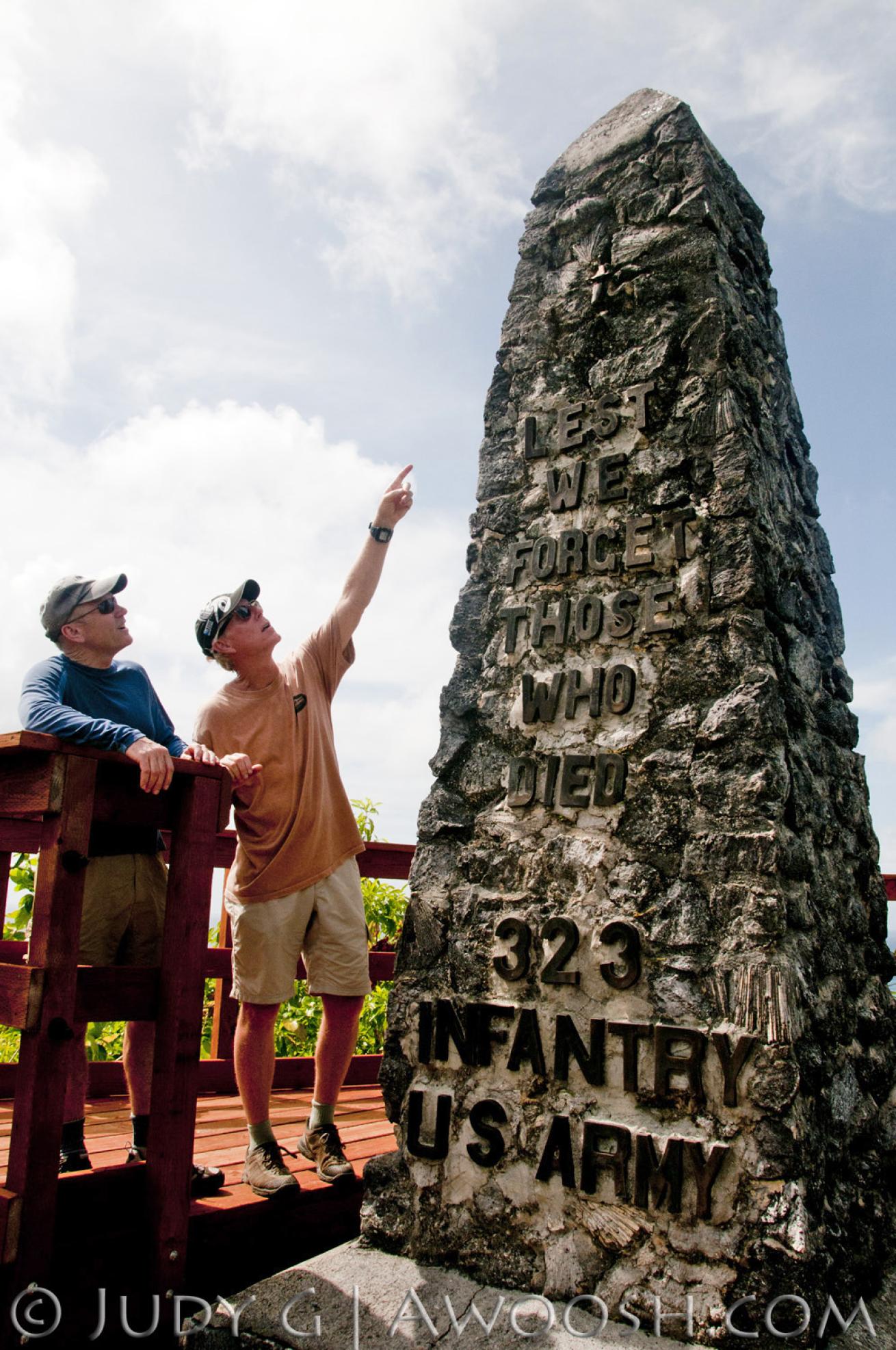
Judy GWar Monument on the island of Peleliu
War Monument on the island of Peleliu
Peleliu is about an hour or so journey on a fast speedboat from Kuror. There are several of these type of monuments on the island. A guided day tour is highly recommended.
The island nation of Palau is located about 500 miles east of the Philippine Islands, at about the same latitude, but despite being close neighbors (geographically speaking) these islands are, in many ways, very different. The Philippines were, for me, mostly about the wonderful macro life. Palau was more about big animals, schooling fish, and interesting reef formations.
We started venturing to Southeast Asia to dive about eight years ago. Over those years, in all the locations we’ve been diving, we’ve noticed an alarming dearth of sharks. Healthy coral reefs need apex predators. Sadly, it appears that most of them have been captured and finned (while still alive!) to feed an enormous and seemingly insatiable market for (perplexingly prestigious) shark fin soup. There are signs that there is finally some much needed change occurring in consumer habits regarding this product. It remains to be seen if it is too late for decimated shark stocks around the world to recover. In fact, in many locations where I have been diving, there are very few bigger-than-your-fist fish left at all.
In my ten or so trips to Southeast Asia, diving in as many different locations, I’ve seen not more than a couple of dozen sharks, in total. That is tragic. So it was heartwarming to dive the reefs of Palau and see sharks. On. Every. Single. Dive. We spotted white tips, black tips, gray reef sharks and several leopard sharks.
Getting pictures of sharks is difficult (with the Leopard Shark, a bottom lounger, being the easiest to get close to of the ones I listed above). Despite popular folklore, most species of sharks are reclusive animals, and are very wary of humans. Unfortunately that doesn’t help them if long-lined, or netted, or dynamite fished…
So sharky dives were one of the big highlights for me of this trip. Another was the hauntingly beautiful Jellyfish Lake, in which a pocket of the ocean became land-locked at some point in history, and the jellies, lacking the usual predators, evolved into non-stingers. This was a snorkel excursion, and spending an hour or so floating in a salty lake with literally millions of these poetic, benign creatures was lovely.
Palau is also very fishy, and again, it was so wonderful to see large schools of fish – jacks, and snappers, and crescent-tails, and barracuda, and grunts, and even a herd of bumphead parrotfish. The conservation culture of Palau, which recognizes the value of tourism, and seems to nationally embrace it, seems to really be helping to keep a healthy diversity of animals on the reefs and in the blue. As I said above, you don’t see a lot of fish anymore in a lot of locations in this part of the world.
Oh, and turtles. We saw lotsa turtles. And gargantuan giant clams. And flatworms. But we did not see many nudibranchs, or large varieties of anemone fish. If you follow my stuff, you’ll know I am a bit obsessed with anemone fish. ;^)
The reefs of Palau are reasonably colorful and diverse (although I’d have to say not quite as pretty as some other places I’ve been – Fiji, Raja Ampat, Komodo as examples), and we saw a lot of very large sea fans and some huge stands of lettuce coral. Given the amount of divers in the water (it is a very popular dive destination), and some of the very poor diving practices we witnessed, it was amazing to me that many of the fans and large corals did not yet have signs of diver damage.
Chandelier Cave, a very shallow cavern dive, was cool too. The archipelago of Palau (comprised of hundreds of islands and islets) was formed from limestone, and so is very porous and easily eroded. We dove the famous Jakes Seaplane wreck, just minutes from the harbor in Kuror, as well as a nearby freighter wreck. It is my understanding that there is plentiful wreck diving in Palau — mostly WW2-related sinkings. We also did several dives featuring blue holes, tunnels and caves, and we dove some pretty vertiginous walls. Palau certainly offers a broad menu of delicious diving.
And then there was Blue Corner — a revered dive site, often cited in ‘Top Ten Dives in the World’ lists. Hit it right, and it is magic. Hit it wrong and it can be hair-raising. We did it both ways, with the hair-raising version going down in my dive history as the gnarliest current dive I have done to date.
And finally, Palau is about interesting and poignant history. We did a full day land tour of Peleliu Island – the scene of one of the major land engagements between the Japanese and the US. It was informative and educational, and despite the passage of years, there is still abundant war memorabilia to see, both in the small museum, and literally scattered around the island.
We had an extra day after we got off the live aboard before flying home, and so we hired a local guide to take us on a cultural tour of Koror, the main island of Palau. It was very interesting and enlightening to learn about the people and their history.
As a popular divers’ destination, Palau is well set up with hotels, restaurants, and numerous dive operations. Several live aboard companies also have boats in the area. Our combination of a few days of land-based diving and tours, and a week on a dedicated dive live aboard, was ideal.
Judy G is a traveling underwater photographer. Check out her blog HERE and follow her on Facebook: Judy G Diver
More from Judy G
Don't Be This Diver — What Not To Do Underwater
Macro Diving: Looking for Mr. Little

